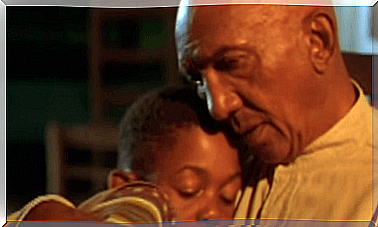Emotional Agility: Developing It To Live Better

What do you do when you feel disappointed, frustrated, angry or sad? If you keep everything inside and lock these dimensions, then be careful, because sooner or later they could explode in the worst way. One way to avoid these “mind aches” is to train your emotional agility.
In fact, all of us should work on this dimension more often than we do. In 2015, psychologist and lecturer Susan David gave a boost to the spread of this term through the TED platform.
This concept went viral in a short time, and the first books on the subject were published shortly thereafter. Among the various texts, interesting works stand out such as Emotional Agility: Don’t get stuck, embrace change and thrive in life and work.
An aid with emotional agility
Many of us struggle every day with complex psychological states that we cannot manage. However, if we applied a more agile and flexible mental approach, then we would be able to enter with more compassion in contact with thoughts and emotions.
In a world that is already too complicated, the advice is to get up and behave as allies of ourselves, in order to face the daily difficulties a little better. Let’s deepen the topic.

What do we mean by emotional agility?
We are increasingly stressed and, of course, more tired. This progressive wear involves almost any dimension. We struggle to make decisions, work becomes an insurmountable obstacle and often our interpersonal relationships end up being affected by this psychological fatigue.
At the origins of this malaise there are our emotions, that stress that invades mind and body; that sadness that we accumulate, the anger silenced, the disappointments that come to stay, the anguish that wears down the soul. And here everything gets complicated, it becomes tiring even to breathe or sleep at night.
Managing emotions well is our eternal unfinished business. Therefore, a society that reads more and more texts on self-support still seems to lack a basic course to survive and manage well the events that hurt and distress.
Emotional agility can be a response to this emotional block, it can help us flourish and feel better psychologically.
Four key points to discover emotional agility
Susan David coined this term with a very clear idea. The purpose of emotional agility is not to make us happy, but to help us achieve well-being. It aims to promote the flowering of our inner world, the one with which to live in harmony, so as to thrive in social relationships and in our career.
An example of this is given by Jain University, which conducted a study on the analysis of this dimension in several companies in India. For this purpose, a test was administered to some subjects between 20 and 56 years of age.
One aspect observable by researchers is the importance that emotional agility assumes for anyone, for any worker who wants to manage potential obstacles a little better, both in the workplace and in life. Well, emotional agility is characterized by the following dimensions:
- Downplaying or ignoring negative thoughts and emotions is useless. Emotional agility teaches us to accept emotions, as well as every sensation, every idea passes through our mind, in order to shape them and replace them with more precious and healthy reasoning.
- Being emotionally agile helps us feel psychologically safe. It also makes us feel confident, as we will act as allies, with compassion, kindness and respect. Only then do we stop being enemies of ourselves.
We feel safe because we believe in our potential, in that wisdom that we cherish, but which we do not always have the courage to put into practice. Furthermore, this self-confidence is reflected in social relationships, at work.
Furthermore…
- Another benefit is that we stop feeling stuck. Emotional knots and worries stop being chronic.
- Finally, it is important to keep in mind that emotional agility is a symptom of adaptability, and that this adaptability is given by knowing how to react to any circumstance, person or situation and knowing how to move with confidence in any life event.

How do you become emotionally more agile?
Who wouldn’t like to develop emotional agility? Like any other skill, we can all refine it little by little by training willpower, self-discipline and commitment to ourselves. Let’s find out which dimensions can help us activate them.
Four exercises to do every day
- The first major step, as well as the one behind it, is acceptance. We need to be able to accept and validate every emotion we feel. We cannot put aside or hide what hurts, worries us or drains us energy. Knowing how to recognize what happens to us is the first step to better manage emotions.
- The second step is to step forward. What does it mean? Once sadness and anger have been accepted, we must face them and interpose a certain distance between us and these emotions, in order to rationalize, see things more objectively. “ I understand that you are sad, but the last thing to do is get angry with everyone or isolate yourself. The right thing is to face things, to accept that certain realities can no longer exist ”.
- Then comes the time to set a goal. “What is all that I am experiencing teaching me? What can I do to feel better? I am already doing it? How can I behave to feel in harmony with my needs and my values? ”.
Last, but not least, the time comes to continue, to move forward, to overcome difficulties, in harmony with what we want and what we deserve in every moment.









